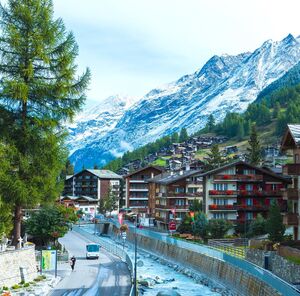The success of second homes
22.06.2021

For many months now, demand for Swiss second homes has been rising steadily. As a result, the limited supply is leading to an increase in prices. It is possible that this increase will continue, as demand may also continue to rise.
In an article published by UBS, we learn that it is the mountain locations that appeal to the most people. These include Gstaad, St Moritz and Zermatt. The price per square metre in these communities is therefore very high. However, the price of a square metre will vary depending on the location or canton in question.
The value of a square metre started to change in 2016, when the Federal Law on Secondary Residences came into force (if a municipality's share of secondary residences exceeds 20%, it can no longer build new secondary residences). Firstly, it was necessary to absorb the oversupply resulting from the numerous constructions carried out just before 2016. Then prices started to rise again. This phenomenon was even reinforced in 2020, the year of the pandemic. According to UBS figures, in one year, prices would have risen by 4%.
This increase could continue, as demand does not seem to be decreasing. Indeed, with the Covid-19 pandemic, people are focusing on local tourism and not going abroad. This may lead some people to want to treat themselves to a piece of paradise not far from home. Moreover, the democratisation of the home office could encourage this trend. Finally, according to this article, a second home should be considered as a consumer good rather than an investment.
In an article published by UBS, we learn that it is the mountain locations that appeal to the most people. These include Gstaad, St Moritz and Zermatt. The price per square metre in these communities is therefore very high. However, the price of a square metre will vary depending on the location or canton in question.
The value of a square metre started to change in 2016, when the Federal Law on Secondary Residences came into force (if a municipality's share of secondary residences exceeds 20%, it can no longer build new secondary residences). Firstly, it was necessary to absorb the oversupply resulting from the numerous constructions carried out just before 2016. Then prices started to rise again. This phenomenon was even reinforced in 2020, the year of the pandemic. According to UBS figures, in one year, prices would have risen by 4%.
This increase could continue, as demand does not seem to be decreasing. Indeed, with the Covid-19 pandemic, people are focusing on local tourism and not going abroad. This may lead some people to want to treat themselves to a piece of paradise not far from home. Moreover, the democratisation of the home office could encourage this trend. Finally, according to this article, a second home should be considered as a consumer good rather than an investment.


